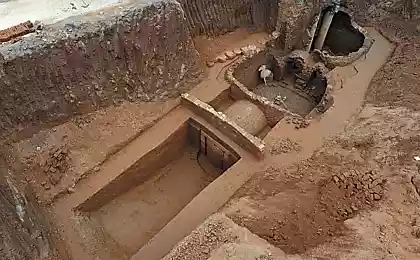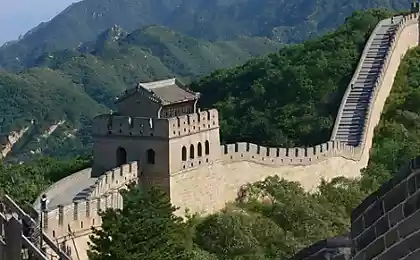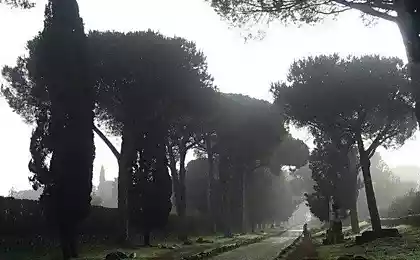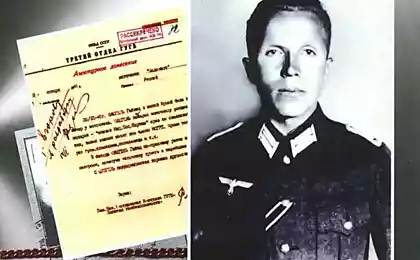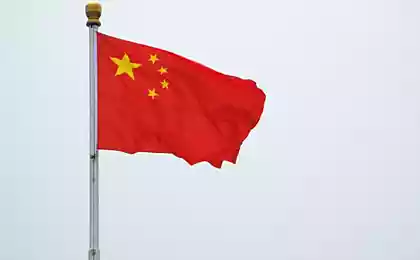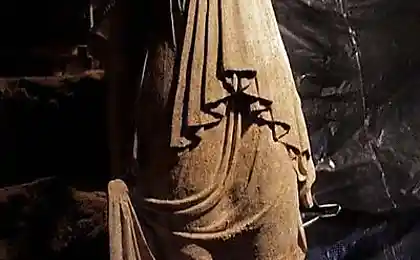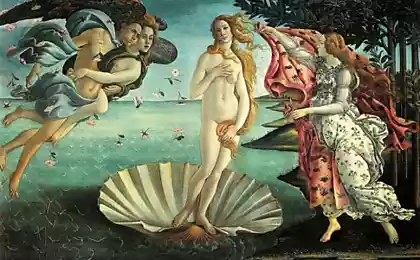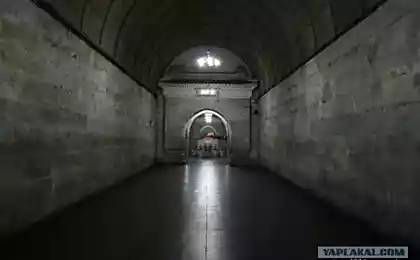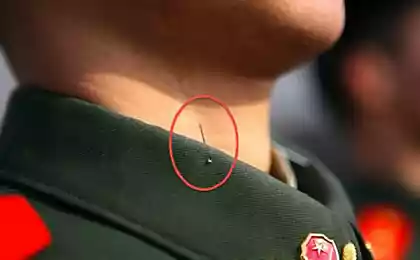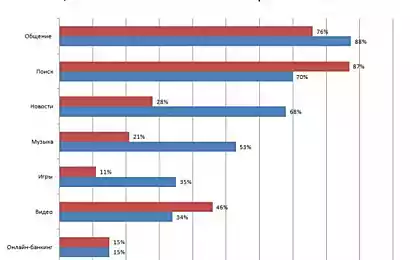900
In China, excavated the tomb of the Three Kingdoms era of General
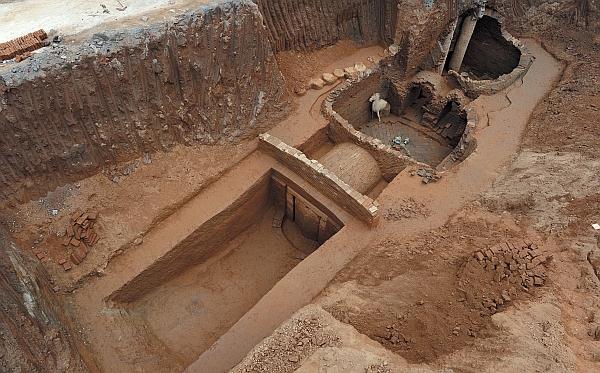
About 1 800 years ago, at a time when China was divided into three warring kingdoms, he was buried a warrior.
He was put in the grave with a domed roof with his wife about 45 years. And only now their remains found in two rotten wooden coffins. Archaeologists do not know the names of the dead, but on the basis of grave devices and related subjects, experts believe that it was the general who served as one or even multiple masters - perhaps to Cao Cao and his son Cao Pi.
Here and below the photo Chinese Archaeology.
The tomb was found in Xiangfan - a city which, during the Three Kingdoms had great strategic importance. Excavations began in October 2008, and the opening was just telling the magazine Chinese Archaeology.
Employees Syanfanskogo Municipal Institute of Cultural Relics and Archaeology, found many treasures. Among them - a bronze horse almost life-size, one of the largest finds in the history of China (163 cm in length and the same height). Standing with the animal depicted navostrёnnymi ears, bulging eyes, open mouth; erect mane, tail lowered, the neck is long and wide.
It detected as amazingly detailed model of a two-storey house made of glazed ceramics. The house is surrounded by a wall with a gate. Each leaflet is the last door knocker in the shape of a ring and two "feathered" human figurines. Among the decorative elements that adorn the house, often meet a bear theme.
Such ceramic houses are well known for a previous era in China's history, when the rules of the Han Dynasty. But such multi-storey houses are rare.
As for jewelery, you name it: gold and silver discs, beads of crystal and agate, gold bracelets, and others. Among the finds there are jade figurine of a pig with jewelry fashioned muzzle, according to which, the animal peacefully snuffle and a dog made of glazed ceramics which fiercely barking and creepy god - protector of the tomb, to the tip of a long tongue which is attached some creeping animal.
It is worth noting as a bronze mirror with a knob in the center. It is decorated with elaborate designs depicting phoenix and forging - legged demon. The two inscriptions read: "favoring descendants forever" and "Yes, the owner of the place will receive three princes." Three Prince considered the most senior people in ancient China, after the emperor.
On the general's dignity warrior testify bronze and iron swords, as well as a bronze crossbow trigger.
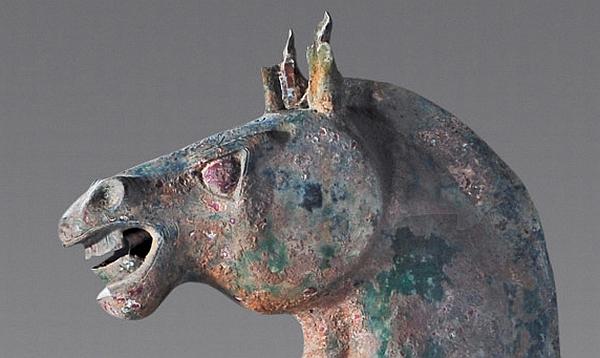
Three Kingdoms - one of the most famous periods in the history of China, which ended the 400-year reign of the Han dynasty. For the unification of the country under his rule struggled State Wei, Shu and Wu.
This one served as General? Hard to say, because Xiangfan passed from hand to hand. By the end of the Han Dynasty the city was under the control of Liu Biao - provincial governor Jin. He held it until his death in 208, after which Xiangfan took an army of Cao Cao, the first minister and de facto ruler of the Han, who used this option as a base for trips further south, until he was defeated separatists Liu Bei and Sun Quan in the famous battle of Red Cliff.
But after the defeat of Xiangfan remained in the hands of Cao Cao, despite his attempt to take away, undertaken in 219 year glorious military leader by the name of Shu Guan Yu.
In the year 220 Cao Cao died; he was succeeded by his son Cao Pi, who proclaimed himself emperor, but in reality could not control the entire country. From that moment I decided to count the beginning of the era of the Three Kingdoms.
Cao Pi died very early in the year 226, and during his reign Xiangfan, it seems, remained in his hands. Perhaps our general was one of his entourage once he was allowed to build a large tomb, filled with treasures.
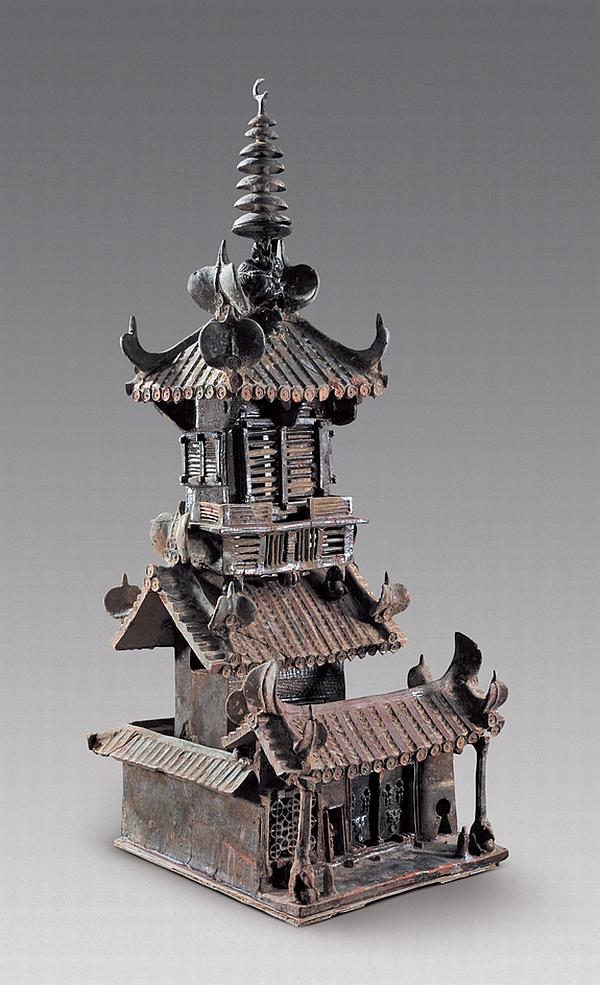
Small rodents have not given extinct prehistoric forests
The domestication of animals in southern Africa has receded into the past hundred years
